This post may contain affiliate links. Please read my privacy policy.
Cotton soft, puffy and fluffy steamed buns or mantou. This Chinese steamed buns recipe is easy, quick and 100% fail-proof, with only 20 minutes active time!
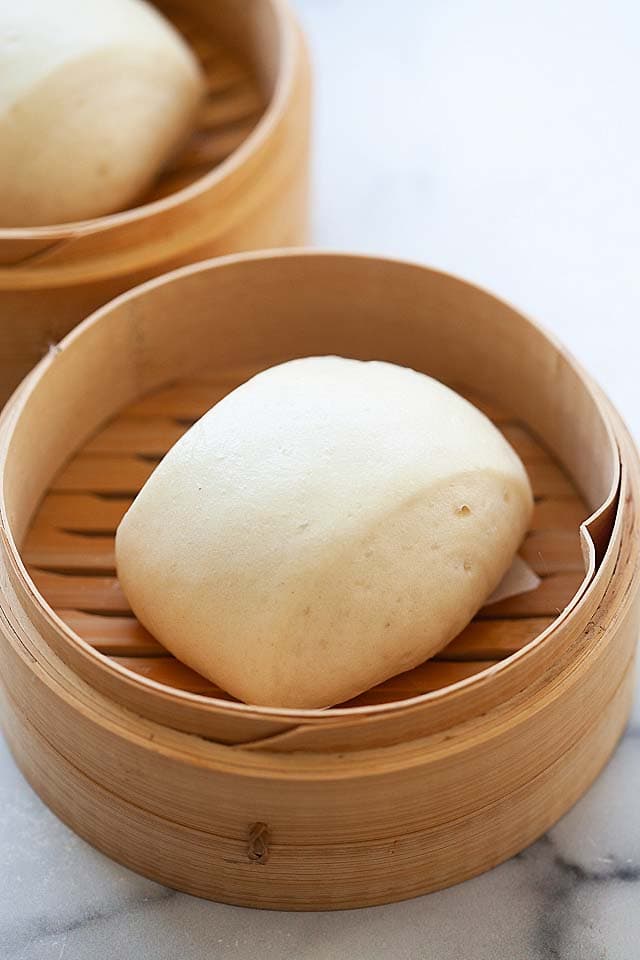
Mantou
Traditional Chinese steamed buns or mantou (馒头) is one of the most popular steamed bun recipes in Chinese food.
In this post, you are going to learn the easiest way to make homemade steamed buns or mantou buns.
This recipe is so quick, easy and 100% fail-proof.
The active time is only 20 minutes and a tray of steaming hot buns will be ready in less than 1 1/2 hours, including proofing time!
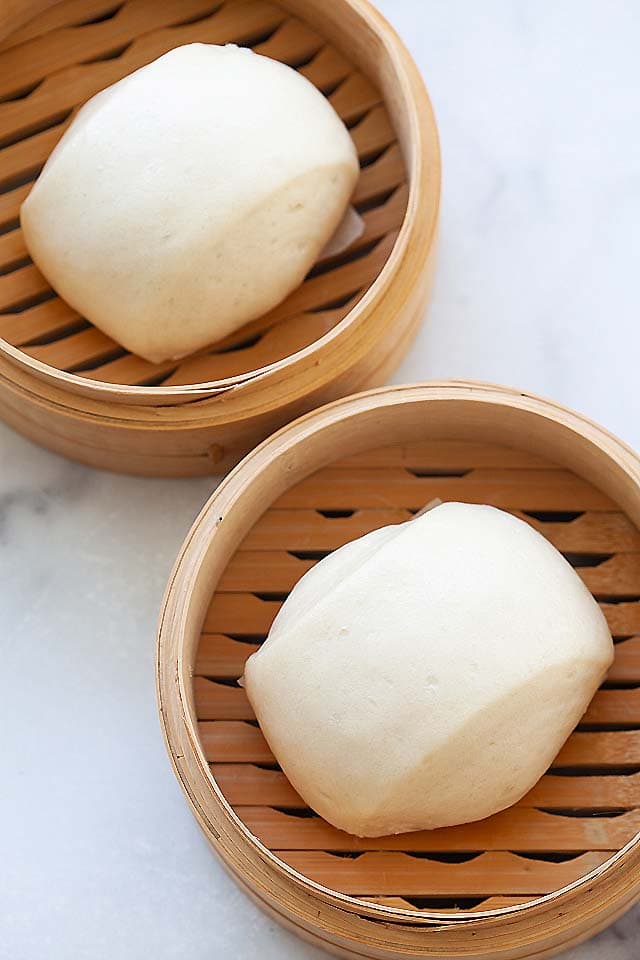
Steamed Buns Recipe
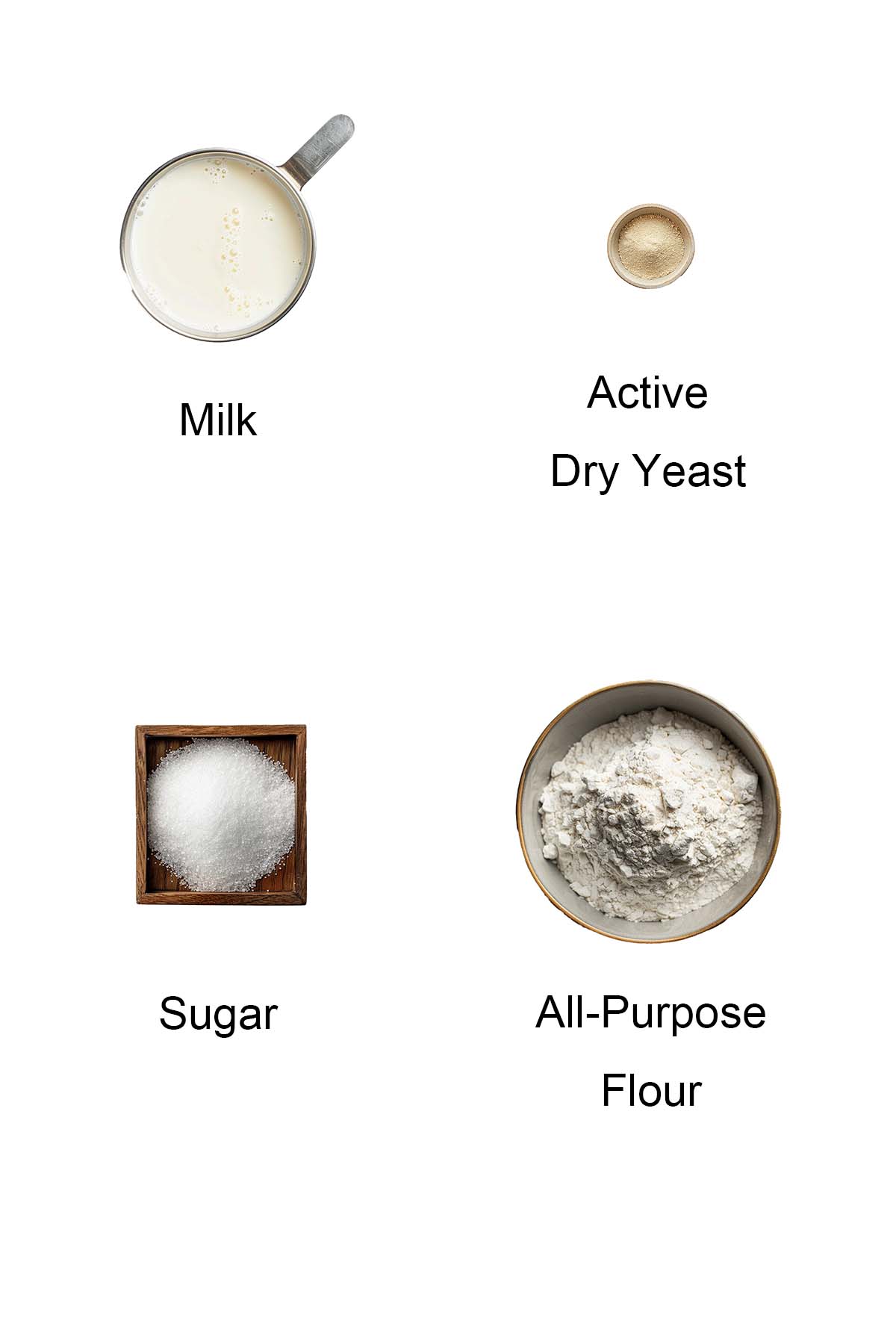
While you can buy mantou buns from Chinese grocery stores or restaurants, they are very easy to make at home.
My steamed buns recipe calls for only four (4) basic ingredients below:
- All-purpose flour
- Milk – I love milk in mantou recipe, but you can also use water or soy milk. I used whole milk in my recipe, but you can certainly choose to use low fat milk or skim milk.
- Sugar
- Yeast
See the recipe card for full information on ingredients.
How To Make Steamed Buns
There are two ways of making mantou. Traditionally, mantou are 100% hand-made. The dough is kneaded by hands.
My method is the quickest and easiest method.
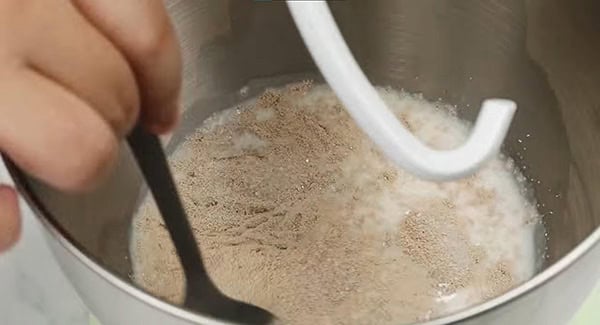
Step 1. Add the milk, yeast, and sugar to the bowl of a stand mixer fitted with a dough hook. Stir the mixture with chopsticks or a spoon.
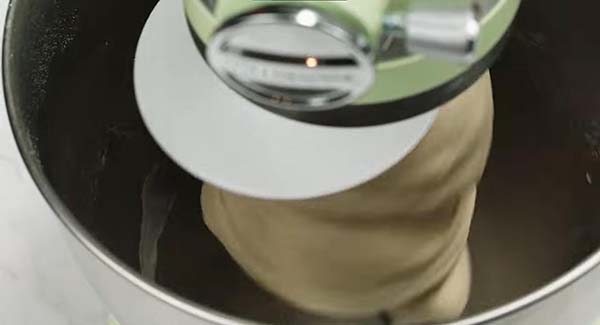
Step 2. Add the flour to the yeast mixture. Turn the mixer to speed 1 and knead the ingredients until a smooth dough forms, about 6 minutes. If the dough starts to ‘climb up’ the dough hook, stop the mixer and push the dough back down into the bowl.
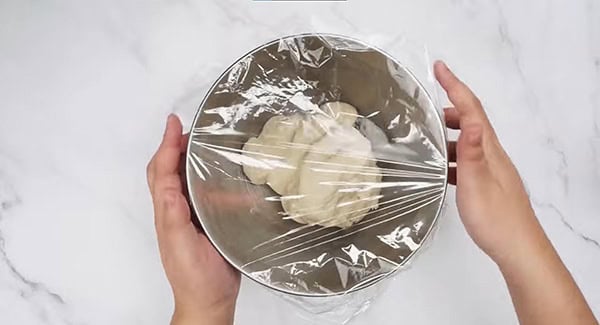
Step 3. Transfer the dough out, cover it with plastic wrap, and let it rest for 5 minutes.
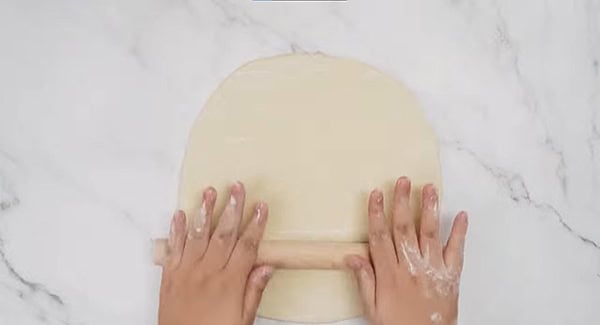
Step 4. On a lightly floured surface, roll out the dough with a rolling pin from bottom to top. Turn the dough horizontally and roll again from bottom to top. Continue rolling the dough until it forms a 14×10″ (35cm x 25cm) rectangle.
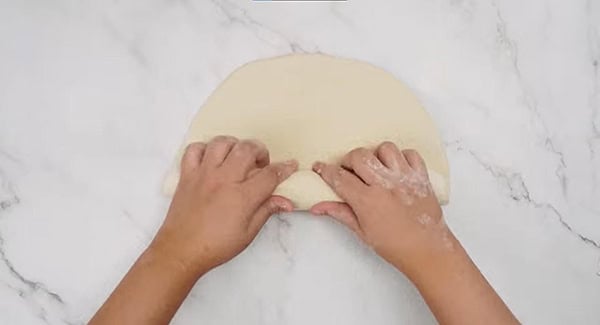
Step 5. Roll up the dough into a log from left to right. Make sure to tuck and roll the dough tightly to form a compact log.
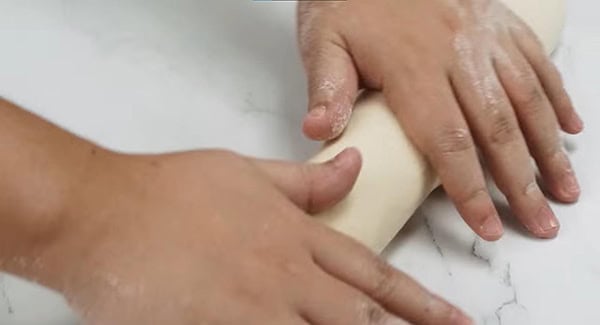
Step 6. Roll out the log a few times until the surface looks smooth and it reaches 12 inches (30 cm) in length.
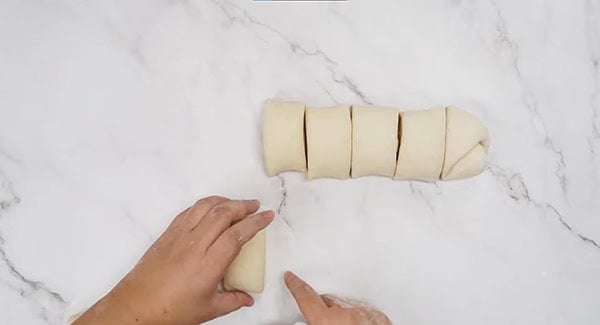
Step 7. Cut the dough into 8 equal-sized pieces using a sharp knife. Transfer each piece to a 3×4-inch (7 cm x 10 cm) piece of parchment paper. You may roll each piece into a round ball after cutting.
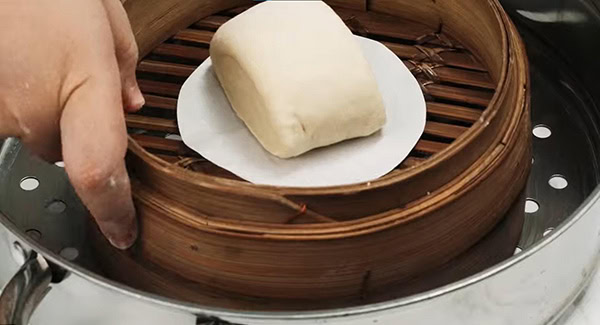
Step 8. Place the dough into a steamer. Cover the steamer and let the dough rise for 60 minutes, or until the dough balls expand in size. Make sure to leave enough space between each dough ball so they don’t stick together.
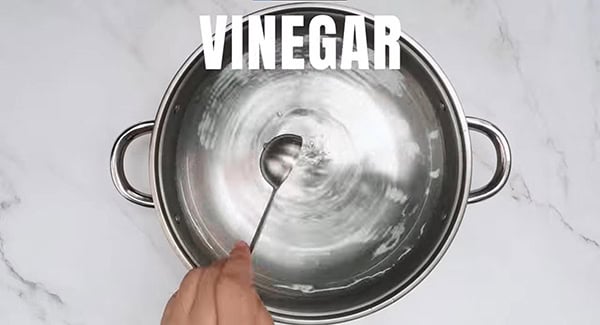
Step 9. Add water to the bottom of the steamer. You may add 1 teaspoon of Chinese white vinegar to make the steamed buns whiter. Cover the lid tightly
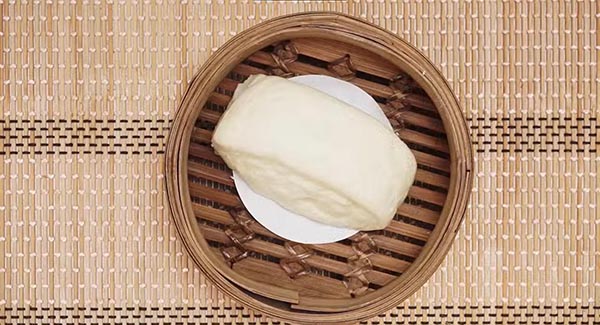
Step 10. Turn on high heat and steam for 10-12 minutes, or until the dough expands into soft, puffy, and fluffy steamed buns. Turn off the heat and serve the steamed buns warm. Dip in condensed milk if you like sweet steamed buns.
Frequently Asked Questions
Some recipes in Korean recipes and Japan recipes originated from Chinese recipes. Korean and Japanese versions of steamed bao buns are very similar to Chinese buns.
Add 1 teaspoon of Chinese white vinegar to the water inside your steamer before steaming. It will make the buns extra white in appearance.
Yes, you can. Baozi (包子) or bao is a type of steamed buns with fillings. Steamed bao buns are basically mantou with a filling. It uses the same dough recipe.
I don’t recommend freezing but you can certainly keep them in the refrigerator. Pack the leftovers in a plastic bag and keep in the fridge for up to a week. To serve, just reheat them in a steamer or microwave for 1 minute.
Each bun is only 193 calories.

What To Serve With This Recipe
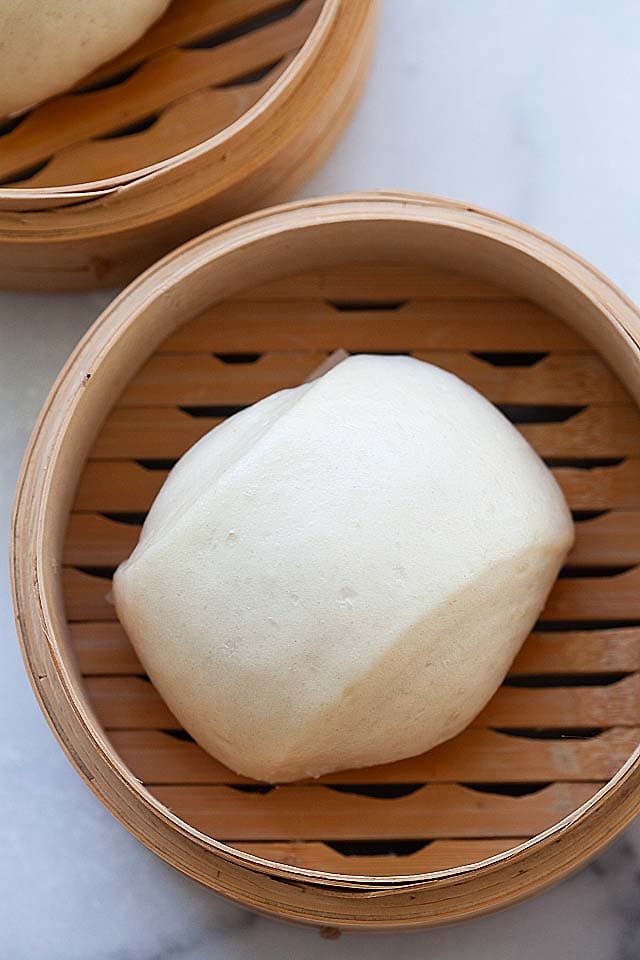
Serve mantou with condensed milk, soy milk, braised pork belly (dong po rou), or Chinese tea eggs. For a wholesome Chinese breakfast, I recommend the following recipes.
I hope you enjoy this post as much as I do. If you try my recipe, please leave a comment and consider giving it a 5-star rating. For more easy and delicious recipes, explore my Recipe Index, and stay updated by subscribing to my newsletter and following me on Facebook, Pinterest, and Instagram for new updates.
Other Recipes You Might Like

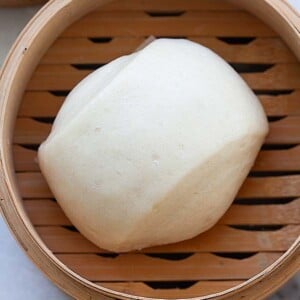
Steamed Buns (Mantou)
Ingredients
- 1 cup milk
- 1 teaspoon active dry yeast
- 2 1/2 tablespoons sugar
- 350 g (12 oz) all-purpose flour
Instructions
- Add the milk, yeast, and sugar to the bowl of a stand mixer fitted with a dough hook. Stir the mixture with chopsticks or a spoon.
- Add the flour to the yeast mixture. Turn the mixer to speed 1 and knead the ingredients until a smooth dough forms, about 6 minutes. If the dough starts to ‘climb up’ the dough hook, stop the mixer and push the dough back down into the bowl.
- Transfer the dough out, cover it with plastic wrap, and let it rest for 5 minutes.
- On a lightly floured surface, roll out the dough with a rolling pin from bottom to top. Turn the dough horizontally and roll again from bottom to top. Continue rolling the dough until it forms a 14×10″ (35cm x 25cm) rectangle.
- Roll up the dough into a log from left to right. Make sure to tuck and roll the dough tightly to form a compact log.
- Roll out the log a few times until the surface looks smooth and it reaches 12 inches (30 cm) in length.
- Cut the dough into 8 equal-sized pieces using a sharp knife. Transfer each piece to a 3×4-inch (7 cm x 10 cm) piece of parchment paper. You may roll each piece into a round ball after cutting.
- Place the dough into a steamer. Cover the steamer and let the dough rise for 60 minutes, or until the dough balls expand in size. Make sure to leave enough space between each dough ball so they don’t stick together.
- Add water to the bottom of the steamer. You may add 1 teaspoon of Chinese white vinegar to make the steamed buns whiter. Cover the lid tightly
- Turn on high heat and steam for 10-12 minutes, or until the dough expands into soft, puffy, and fluffy steamed buns. Turn off the heat and serve the steamed buns warm. Dip in condensed milk if you like sweet steamed buns.
Video
Notes
- Please use the metric measurement for the flour.
- You may use whole milk, low fat milk or skim milk. You can replace milk with water or soy milk. For the best flavors, you may use 1/2 cup heavy whipping cream plus half cup full milk.
- If you don’t have a stand mixer, knead the dough by hands, for 15-20 minutes or until the dough becomes smooth on the surface.
- If the dough is still sticky after kneading for 6 minutes, you may add 1-2 tablespoons of flour to bind the dough.
- If you don’t have a steamer, you may steam the steamed buns using any pans or skillet.
- First, add water to the pan or skillet, then add a small bowl.
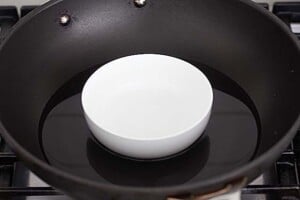
- Next, add a plate on top of the bowl. You can place the steamed buns on the plate, cover the pan or skillet with its lid to steam.
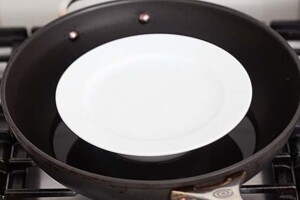
Nutrition
Nutrition information is automatically calculated, so should only be used as an approximation.
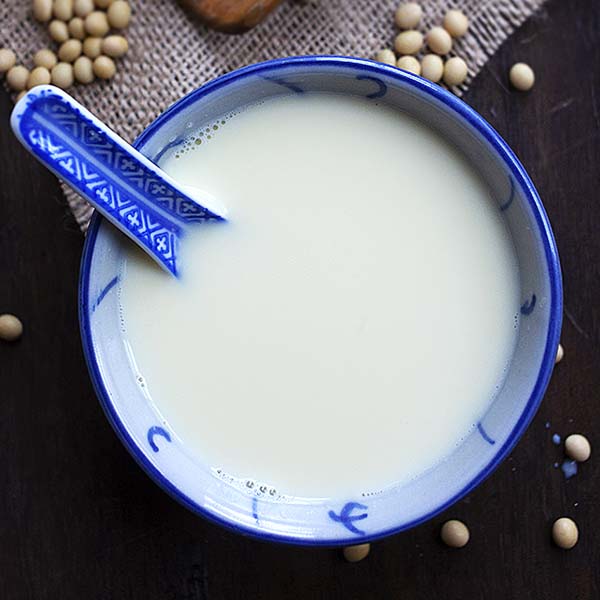
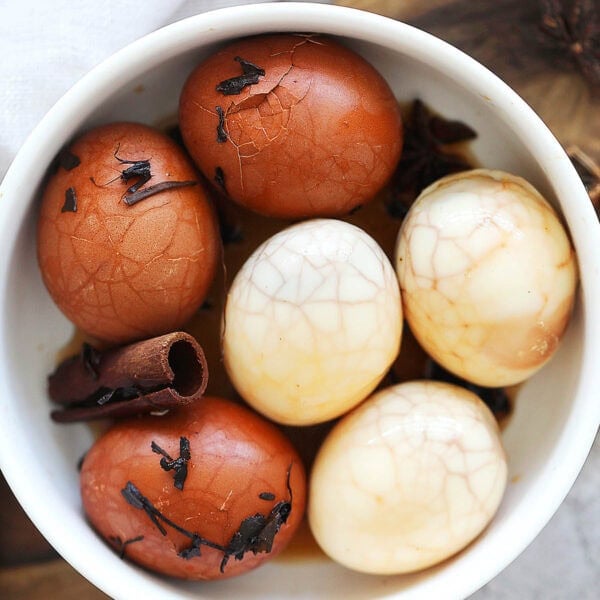
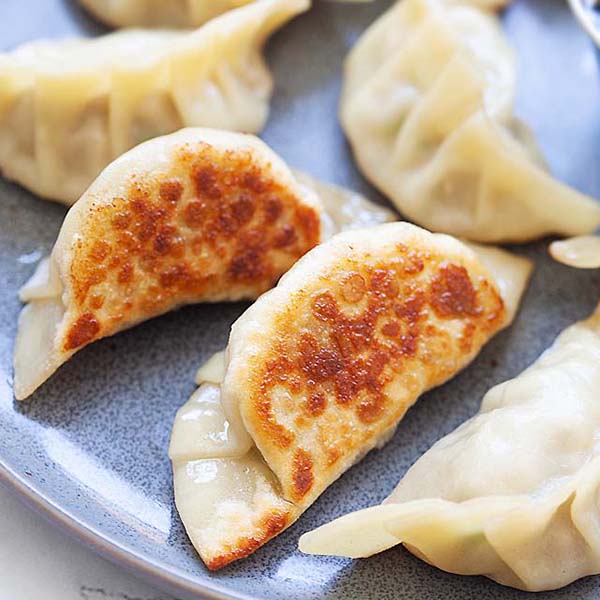
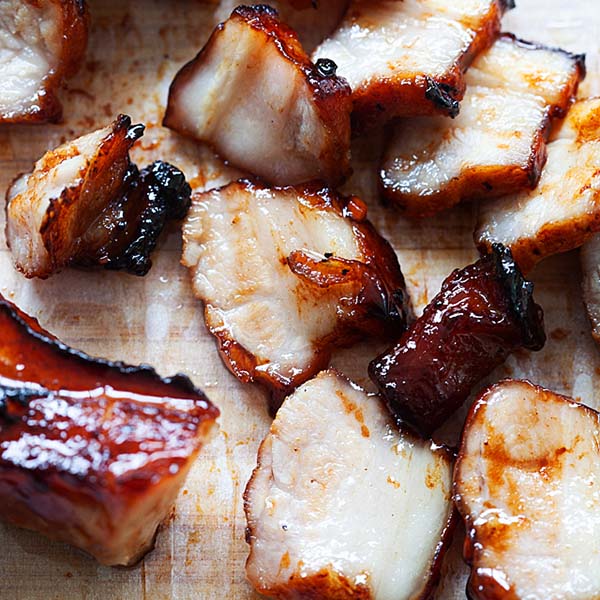






Simple and great recipe. I made these whenever I cook chilly crab or Dong Po Rou. Thanks!
Thanks Sim! :)
Hi, I tried to make these and followed the recipe exactly, but when using the dough attachment on my electric beater whisk or hand kneading, it was still sticky after 6/15-20 minutes and even after that when I let it rest, gave it more more time, and added more flour, the dough just didn’t become smooth, it was still stayed sticky and nothing worked, I tried making it a few times 😔 please can you tell me what could be wrong? Thank you!
Hi Hanna, I am not sure why? I make this a lot and never had an issue. Do you have the right measurement? Please watch the video on how to make steamed buns.
I love this recipe, thank you! It’s so authentic, I never have to buy mantou again! I made them smaller, so 16 of them instead of 8. I left them in the shape after cutting so it would be the authentic traditional shape.
Thank you for your comment, Christine. So glad the recipe works well for you.
whenever I try this the buns come out a bit doughy on the inside and they look blistered on the outside, what am I doing wrong?
Not sure what you did wrong…but sounds like they are not properly kneaded?
The blisters may be due to condensation dripping onto the buns from the steamer/pot cover. You can place a dish towel under the cover to prevent this issue.
Can I replace the all purpose flour with pao flour? Same measurement?
Bao flour has a sweet taste and the texture is different.
Made these to go with roast duck, hoi sin sauce, cucumber, coriander and spring onions. I was worried as they hadn’t risen that much. But after steaming they were perfect, light and delicious.
Nice! :)
Can I knead the dough in a breadmaker instead? And for how long? Thanks!
Yes you can try bread maker. I don’t have a bread maker so I am not sure how long!
This recipe was perfect! I used warm milk to jumpstart the rising. Do you think this recipe could be shape to make bao buns?
Yes you can shape it like bao.
Do I have to heat the milk or at least let it warm to room temperature?